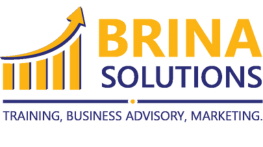
Pay-per-click (PPC) advertising is a powerful tool that can drive highly targeted traffic to your website. However, to make it profitable, businesses must strategically optimize their campaigns to ensure maximum return on investment (ROI). Here’s a step-by-step guide to maximizing ROI with PPC.
1. Set Clear, Measurable Goals
Define specific goals for your PPC campaign to guide your strategy. Whether you want to increase website traffic, generate leads, or drive sales, having a clear objective helps you measure success and adjust your approach based on results.
Examples of Measurable Goals:
- Increase website visits by 20% in three months
- Generate 50 new leads per week
- Achieve a specific cost per acquisition (CPA)
Tip: Track conversions closely to understand which keywords and ads perform best in achieving your goal.
2. Conduct Thorough Keyword Research
Keywords are the foundation of any PPC campaign. Use keyword research tools like Google Keyword Planner or SEMrush to identify keywords with high search volumes and reasonable competition levels. Focus on keywords relevant to your business and customer intent to ensure the most effective targeting.
Types of Keywords to Consider:
- High-Intent Keywords: Words or phrases that indicate a user is ready to make a purchase (e.g., “buy running shoes”).
- Long-Tail Keywords: Phrases with three or more words. These typically have lower competition and attract more targeted traffic.
Example: If you own a fitness store, long-tail keywords like “affordable workout gear in Nairobi” could help attract users with strong purchase intent.
3. Use Compelling Ad Copy
Your ad copy should grab attention and convey a clear message that encourages users to click. Keep it concise, and focus on unique selling points (USPs) that make your offer stand out. Experiment with different copy variations to identify the most effective phrasing.
Key Elements of Effective Ad Copy:
- Clear Call-to-Action (CTA): Use phrases like “Shop Now” or “Get a Free Quote” to guide user actions.
- Highlight Benefits: Emphasize what makes your product or service valuable (e.g., “Fast, Free Shipping”).
- Include Keywords: Use keywords within the ad text to match search queries closely and improve ad relevance.
Example: For a limited-time discount, you could use “Limited Offer: 20% Off All Fitness Gear – Shop Now!”
4. Optimize Landing Pages for Conversions
Your landing page is the destination for users who click on your ad, so it should be designed to convert visitors into customers. Make sure the content on your landing page aligns with the ad, loads quickly, and provides an intuitive user experience.
Landing Page Optimization Tips:
- Match Content with Ad: Ensure the landing page delivers on the promise in the ad copy to maintain user trust.
- Use a Clear CTA: Prominently display your call-to-action, such as “Download Now” or “Sign Up Today.”
- Reduce Distractions: Avoid unnecessary elements that could divert users from the main objective.
Tip: Use A/B testing to try different versions of your landing page and find the design that yields the best results.
5. Monitor and Adjust Bids for Optimal Performance
PPC platforms like Google Ads allow you to set bids based on how much you’re willing to pay per click. Regularly monitor your bids and adjust them to optimize costs and achieve higher ad positions for key search terms. Keep a close eye on high-performing keywords and consider increasing bids to maximize reach, while lowering bids for underperforming keywords.
Bidding Strategies:
- Manual Bidding: Allows precise control over bid amounts for each keyword.
- Automated Bidding: Lets Google or other platforms set bids based on specific goals, such as maximizing clicks or conversions.
Tip: Test different bidding strategies to find one that aligns with your budget and ROI goals.
6. Implement Remarketing to Recapture Potential Customers
Remarketing allows you to target users who previously visited your site but didn’t convert. These users are already familiar with your brand, making them more likely to convert on subsequent visits. Remarketing ads appear on platforms like Google Display Network and social media channels, keeping your brand top-of-mind.
Remarketing Tips:
- Create Targeted Ad Copy: Use specific offers or promotions that encourage return visits.
- Segment Your Audience: Customize ads based on user behavior, such as targeting users who abandoned a shopping cart.
- Cap Impressions: Limit the number of times users see your ad to avoid oversaturation and reduce ad fatigue.
Example: A remarketing ad that offers a 10% discount for users who viewed a product but didn’t complete a purchase can encourage return visits and conversions.
7. Leverage Ad Extensions for Higher CTR
Ad extensions provide additional information, making your ad more engaging and increasing click-through rates (CTR). Extensions can highlight benefits like location, contact information, special promotions, and more.
Types of Ad Extensions:
- Sitelink Extensions: Link to specific pages on your website, such as product pages or a contact form.
- Call Extensions: Display your phone number so users can call directly from the ad.
- Promotion Extensions: Feature special offers or discounts to attract more clicks.
Example: A retailer could use sitelink extensions to direct users to specific categories, like “New Arrivals” or “Sale Items.”
8. Analyze Data and Optimize Regularly
Analyzing your PPC data is essential to maximize ROI. Regularly check metrics like click-through rate (CTR), cost per click (CPC), conversion rate, and cost per conversion. Use these insights to make data-driven adjustments to your keywords, ad copy, and bids.
Key Metrics to Track:
- CTR: Indicates how well your ad is resonating with users.
- CPC: Shows the average cost per click, helping you manage costs.
- Conversion Rate: Measures the percentage of users who take a desired action after clicking the ad.
Tip: Set a schedule to review performance weekly or monthly, making adjustments based on trends and campaign data.
Conclusion: Maximize Your PPC ROI with Strategic Adjustments
PPC advertising can drive significant traffic and conversions, but maximizing ROI requires a strategic, data-driven approach. From keyword research and landing page optimization to remarketing and ongoing adjustments, each step plays a role in creating a high-performing PPC campaign. By implementing these best practices, businesses can achieve better results, optimize ad spend, and drive meaningful growth.
Need help managing your PPC campaigns? Contact Brina Solutions for expert strategies to optimize your PPC efforts and boost your ROI.







Leave a Reply